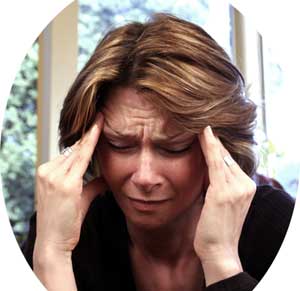Special to CSMS Magazine
Migraines aren’t any headache. It’s a severe, throbbing pain that can keep you home from work, disrupt your family life…and leave you with significant disability. Migraines are very common. In fact they affect 18% of women and 6% of men in the U.S. Without treatment, they can recur year after.
A typical migraine…
- Occurs on one side of the head.
- Is moderate to severe intensity.
- Is exacerbated by physical activity like coughing, walking or climbing stairs
- Is accompanied by nausea, vomiting or sensitivity to light and sound.
Most migraines sufferers (migraineurs) can recognize what’s called a prodrome in the 24 hours leading up to a migraine—sudden depression or exhilaration, increased or decreased appetite, disruption in sleep, etc.
About 15% of migraine sufferers “see” flashing lights or strange shapes just before the headache hits. Such hallucinations are known collectively as an aura.
There’s no easy way to tame migraines. But when migraineurs get good medical care and take an active role in their treatment, nine out of 10 can reduce a once debilitating problem to a minor inconvenience.
What Triggers Migraines?
A migraine starts with abnormal electrical activity in the cerebral cortex, the thinking part of the brain. It spreads quickly to the hypothalamus and the midbrain.
Levels of the brain chemical serotonin rise and then drop sharply, making blood vessels swollen and inflamed.
Though the migraine predisposition is inherited, most individual attacks are triggered by either dietary or environmental factors…
- Alcohol
- Erratic meal and/or sleep schedules
- The artificial sweeteners aspartame (NutraSweet)
- Processed meats and other foods containing the preservative nitrates
- Aged cheese, freshly baked bread, chopped liver and other foods that contain the amino acid tyramine…and chocolate, which contains phenylethamine.
- Perfume or cigarette smoke
- Psychological stress. Most migraines occur when the period of stress is over. That’s why migraines are common after exams or holidays.
To the Rescue
- Acupressure may offer relief to some migraineurs. At the first sign of a headache, press the web between your thumb and index finger, on the same side as your headache, for five minutes.
- Sumartriptan (Imitrex) is the biggest advance in migraine care in more than a century. One self-injection relieves most migraines within 60 minutes. The pill form is also effective, but it takes longer.
Beware: Don’t use sumatriptan if you have heart disease—it narrows blood vessels. If you’re at risk for heart disease(men over 40, family history of heart attack , smoking, blood pressure over 140/90, cholesterol over 220), the doctor may want to administer the first dose in the office, and check your electrocardiogram.
A sensation of pressure in the chest after a dose of sumatriptan is common. But if the drug cause chest pain, discontinue it.
Note: Denise Macano practices internal medicine. She lives and works in Palo Alto, Carlifornia.


